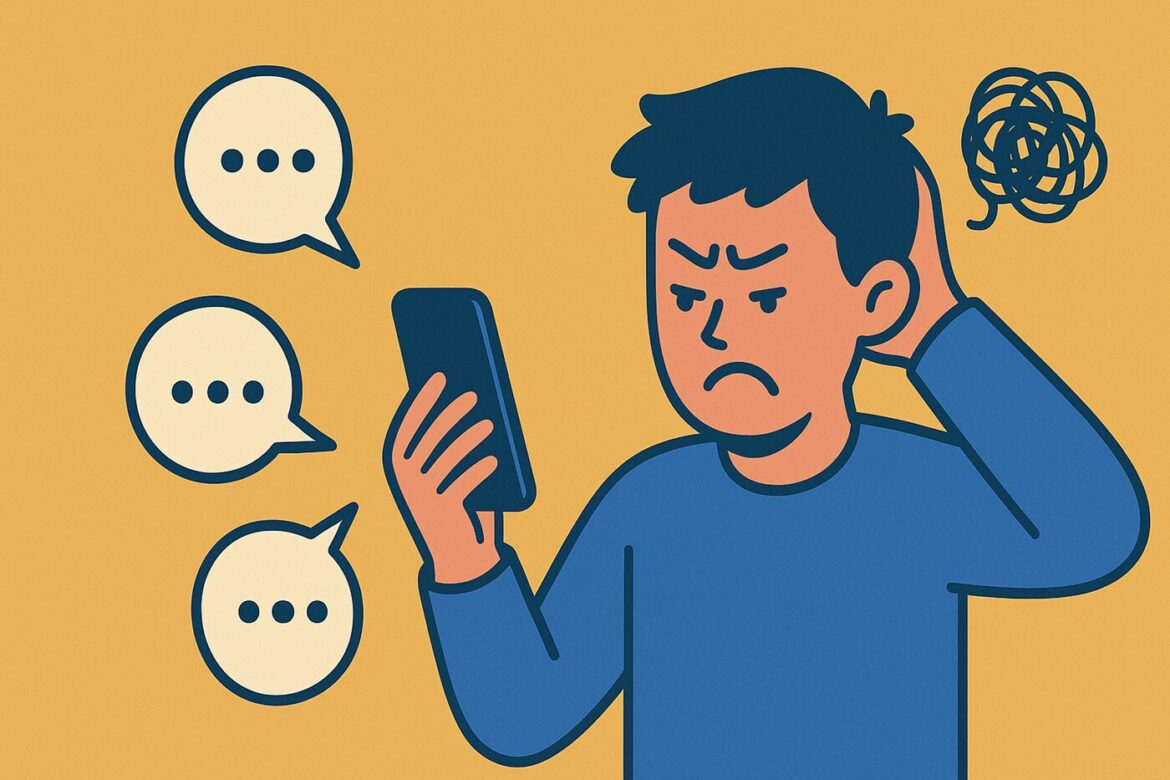Table of Contents
There’s a moment many of us have lived through; that point where our phones buzz incessantly, group chat lighting up like a pinball machine, and your patience running on fumes. After one too many memes, off-topic debates, or a flood of passive-aggressive messages, you snap. Maybe it’s a dramatic exit, maybe it’s a quiet leave at 2:13 a.m. Either way, you’re out. Rage-quit achieved.
But what if the problem isn’t entirely the people in the chat? What if it’s also how group chats are designed, or rather, how they’ve barely evolved since 2010?
I invite you into the new wave of messaging app changes that are starting to reflect what people actually want: control, clarity, and calm. Think of these updates as a digital deep breath, one that might keep you in the chat without wanting to throw your phone across the room.
The Group Chat Problem Is Emotional, Not Just Functional
Group chats were supposed to simplify connection. Instead, they often serve as stress incubators. They ping at the worst times. They spiral into chaotic tangents. They make you feel like you’re either missing out or drowning in digital noise.
Psychology has revealed that group chats can trigger social anxiety, especially when there’s pressure to respond, react, or perform. Personally, for instance, I easily feel drained when I have to go through several group chats to keep up with the “flow”. While our smartphones or notifications could be blamed. Lack of digital boundaries should also be to blame. I mean the inability to control how we manage groups and channel exits in our social messaging apps. And, boundaries are where new app features are finally stepping in.
App Developers Are Catching On: Quiet Control is the New Luxury
Take WhatsApp, for instance. The platform rolled out a feature that lets users leave groups silently in August 2022. No more “Claire has left the chat” alerts, which often provoke more drama than the original conversation. This might seem minor, but it’s a psychological release valve. It lets you disengage without confrontation.
Telegram and Signal have followed with their own “stealth leave” tools and adjustable notification controls where you can choose to archive a group chat you don’t want to participate in. You can also mute the notification of any group chat you choose to stay away from. It’s true you’ll still be part of the group, but at least you have the control of what group to see and when to see them.
Apple’s iMessage hasn’t lagged behind either, adding the ability to hide alerts and summarize long threads into digestible recaps using machine learning. These tweaks show a shift in philosophy: users should be allowed to remain connected without being constantly engaged.
This quiet control is, in many ways, a digital form of emotional consent. It respects your time, your bandwidth, and your desire not to have every conversation turned into a battleground.
Microfeatures That Fix Macro Problems
Small changes in design can have an outsized impact on mental load. Here are some of the subtle, user-first features that are making a difference:
- Threaded Replies: Instead of 23 disjointed responses to one message, newer group chat formats (Slack, Discord) use threads to keep side conversations contained.
- Reaction Summaries: You no longer have to scroll through 30 fire emojis and thumbs-ups. Apps now collapse them into a single line. Less clutter, less chaos.
- Selective Mentions: Want to talk to Priya without looping in the other 11 people? Some apps allow targeted notifications so only the person tagged gets the ping. WhatsApp has this feature in group chats where you can reply someone privately: Private Reply.
- Scheduled Messages: You can type your witty comeback at 2 a.m. and schedule it for 8 a.m. when it’s less intrusive.
These may seem technical, but their emotional outcome is real: they reduce friction. And in social dynamics, especially digital ones, friction is the difference between joy and burnout.
Messaging App Design Reflects Social Values
The bigger story here is that communication tools are starting to reflect how people actually want to interact — not how tech companies assumed they should. It’s a return to nuance, a recognition that not all attention is voluntary and not all communication is harmless.
Designers are now thinking about “notification hygiene” the way nutritionists think about sugar: necessary in small doses, harmful in excess. And just as we’ve become more mindful of digital wellbeing in general — limiting screen time, tracking app usage — group chats are the next frontier.
What People Really Want From Group Chats
Anecdotally, users say they want three things from group chats:
- Asynchronous Control – The ability to participate on your terms, not when others demand it.
- Emotional Safety – A space where sarcasm, venting, or silence doesn’t always trigger misinterpretation.
- Purposeful Design – Tools that match the emotional tone of real human conversation: pausing, digesting, replying with intent.
One user described it like this: “Group chats should feel like a potluck dinner — you can show up, bring something, enjoy it, and leave. Not like a reality show where everyone is shouting over each other.”
Rage-Quitting Was a Symptom, Not a Solution
When people rage-quit a group chat, it’s rarely about one message. It’s about cumulative overwhelm, the exhaustion of being “always on.” But now, app developers are starting to create conditions where you don’t have to rage-quit to find peace. You can mute, minimize, or manage — and that small bit of autonomy changes everything.
These features may not repair your cousin’s overuse of GIFs or your co-worker’s 9 p.m. work messages, but they give you a better way to handle them. Less confrontation, more quiet control.
Fact is, if you’ve rage-quit before, you’re not alone, and you might not have to do it again. The tools are finally catching up with the way real people think, feel, and want to talk.

